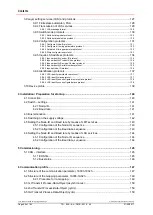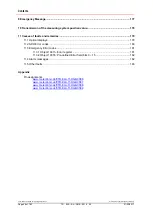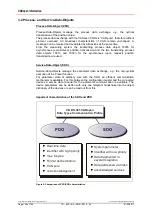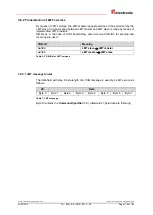
CANopen information
TR-Electronic GmbH 2010, All Rights Reserved
Printed in the Federal Republic of Germany
Page 108 of 183
TR - ELA - BA - DGB - 0016 - 04
01/20/2017
3.2 Process- and Service-Data-Objects
Process-Data-Object (PDO)
Process-Data-Objects manage the process data exchange, e.g. the cyclical
transmission of the position value.
The process data exchange with the CANopen PDOs is "CAN pure", therefore without
protocol overhead. All broadcast characteristics of CAN remain unchanged. A
message can be received and evaluated by all devices at the same time.
From the measuring system the transmitting process data object 1800h for
asynchronous (event-driven) position transmission and the two transmitting process
data objects 1801h and 1802h for the synchronous (upon request) position
transmission are used.
Service-Data-Object (SDO)
Service-Data-Objects manage the parameter data exchange, e.g. the non-cyclical
execution of the Preset function.
For parameter data of arbitrary size with the SDO an efficient communication
mechanism is available. For this between the configuration master and the connected
devices a service data channel for the parameter communication is available. The
device parameters can be written with only one telegram handshake into the object
dictionary of the devices or can be read out from this.
Important characteristics of the SDO and PDO
System parameter
Identifier with low priority
Data fragmented in
several telegrams
Data addressed via Index
acknowledged services
PDO
SDO
CiA DS-301 CANopen
Data Types Communication Profile
Real-time data
Identifier with high priority
max. 8 bytes
Format defined before
CAN pure
no Acknowledgement
Figure 3: Comparison of PDO/SDO characteristics






























